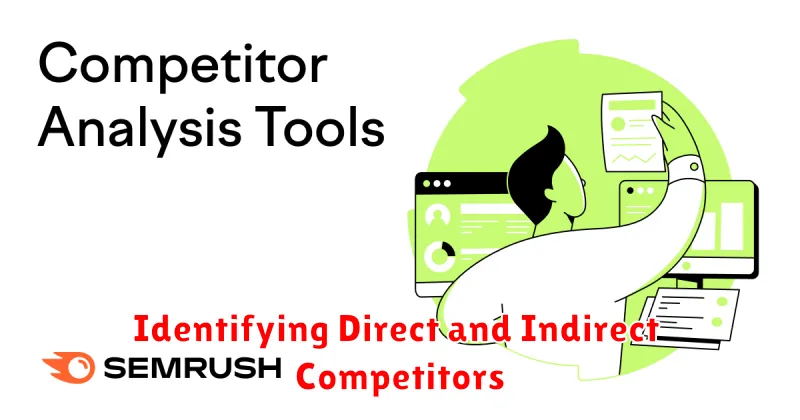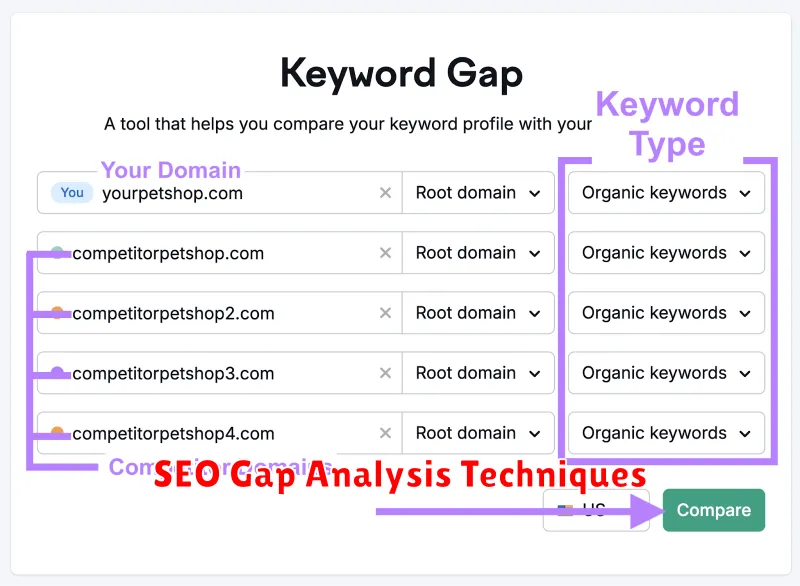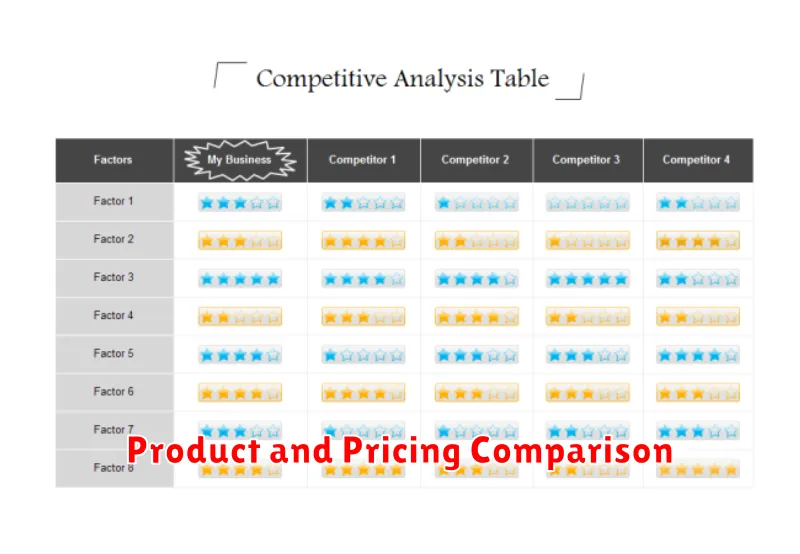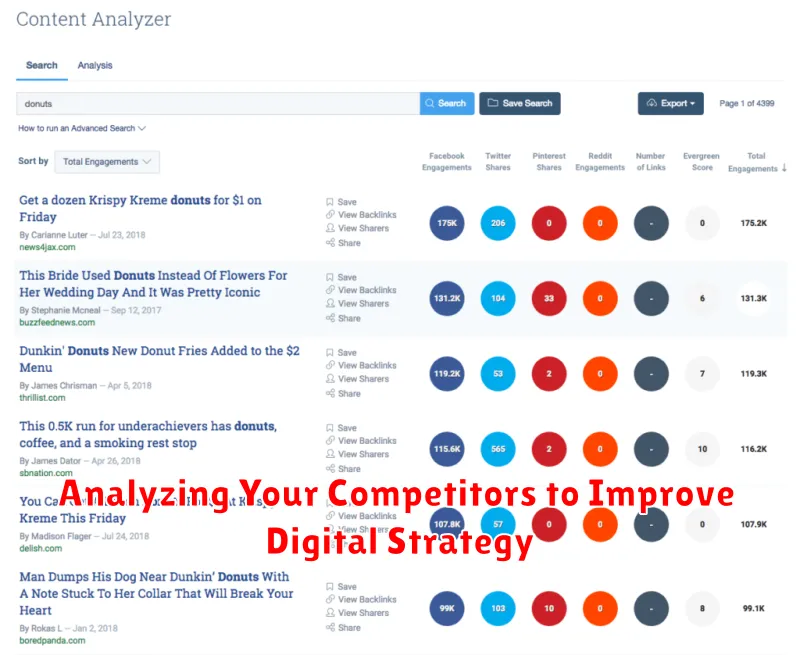In today’s cutthroat digital landscape, understanding your competitors is no longer a luxury—it’s a necessity. Analyzing your competitors allows you to identify opportunities, mitigate threats, and refine your digital strategy for optimal performance. This article will delve into the critical components of competitor analysis, providing a practical framework to evaluate your rivals and leverage those insights to bolster your own online presence and achieve business objectives. From understanding keyword strategies and content marketing tactics to dissecting social media engagement and audience demographics, a thorough competitor analysis provides invaluable data that can inform and enhance every facet of your digital strategy.
By systematically examining your competitors’ strengths and weaknesses, you can uncover crucial information that will inform your digital marketing decisions. This analysis goes beyond simply identifying who your competitors are; it involves a deep dive into their digital strategies, including their SEO tactics, content performance, social media presence, and overall market positioning. Armed with this knowledge, you can identify areas where you can outperform them, discover untapped market segments, and ultimately create a more effective and impactful digital strategy that drives growth and achieves measurable results.
Why Competitive Analysis is Crucial
Competitive analysis is a critical process for any business seeking to thrive in today’s dynamic market. It involves identifying your key competitors, analyzing their strengths and weaknesses, and understanding their strategies. This information provides invaluable insights that inform your own business decisions, allowing you to develop effective strategies to gain a competitive advantage. By understanding the competitive landscape, you can anticipate market trends, identify potential threats, and capitalize on emerging opportunities.
Conducting a thorough competitive analysis enables you to make informed decisions across various aspects of your business. From product development and pricing to marketing and sales, understanding your competitors allows you to position yourself effectively and differentiate your offerings. It helps you determine what makes your business unique and highlight those key differentiators to attract and retain customers. Moreover, competitive analysis enables you to anticipate competitive actions and develop proactive strategies to mitigate potential risks.
Ultimately, the goal of competitive analysis is to improve your business performance. By understanding your competitors and the broader market environment, you can develop strategies to increase market share, improve profitability, and achieve sustainable growth. Regularly reviewing and updating your competitive analysis ensures you stay ahead of the curve and adapt to the ever-changing market dynamics.
Identifying Direct and Indirect Competitors

Identifying your competition is a crucial step in developing a successful business strategy. Direct competitors offer similar products or services to the same target market. For example, Coca-Cola and Pepsi are direct competitors in the soft drink market. Recognizing direct competitors allows businesses to benchmark their offerings, pricing, and marketing strategies. Understanding their strengths and weaknesses is essential for gaining a competitive edge.
Indirect competitors, while not offering identical products or services, still compete for the same customer spending. They may address the same customer need or want in a different way. For example, while Coca-Cola and Pepsi are direct competitors, both also face indirect competition from companies selling juice, tea, or bottled water. These beverages fulfill the same basic need for thirst quenching, thus competing for consumer dollars.
Analyzing both direct and indirect competition provides a comprehensive understanding of the competitive landscape. This broader view enables businesses to identify potential threats and opportunities, develop more effective marketing strategies, and ultimately, achieve greater success in the marketplace. By recognizing the full spectrum of competition, companies can position themselves more strategically and cater to evolving customer preferences.
Using Tools to Track Competitor Content
Tracking competitor content offers valuable insights into their marketing strategies, allowing businesses to identify opportunities and stay ahead in the market. Utilizing dedicated tools streamlines this process, offering features such as content scheduling alerts, keyword tracking, and performance analysis. By understanding what content resonates with your competitors’ audience, you can refine your own content strategy and improve overall effectiveness.
Several tools excel in competitor content tracking. Some popular options include platforms specializing in SEO and social media monitoring. These tools often provide detailed reports on competitor content performance, including metrics like engagement, reach, and backlink profiles. With these insights, businesses can benchmark their own content against competitors and identify areas for improvement, such as content topics, formatting, and promotion strategies. This data-driven approach ensures content remains relevant, competitive, and aligned with audience interests.
When selecting a competitor content tracking tool, consider factors like budget, specific features, and ease of use. While some tools offer comprehensive suites, others focus on niche functionalities. Prioritize the features most relevant to your business needs. For example, if social media is a primary channel, prioritize tools with robust social listening capabilities. Ultimately, effective competitor content tracking empowers businesses to make informed decisions, optimize content strategies, and achieve greater market success.
Analyzing Social Media Engagement
Social media engagement analysis is crucial for understanding audience behavior and optimizing online presence. It involves tracking metrics such as likes, comments, shares, and mentions to gauge the effectiveness of content and campaigns. By analyzing these interactions, businesses can gain valuable insights into audience preferences, identify trending topics, and refine their social media strategies. This data-driven approach allows for more targeted content creation and improved ROI.
Effective analysis goes beyond simply counting interactions. It involves understanding the context of engagement. For instance, a high volume of comments isn’t necessarily positive if those comments are primarily negative or critical. Therefore, sentiment analysis plays a key role in accurately interpreting engagement data. Additionally, analyzing engagement patterns over time helps identify peak periods of activity and tailor posting schedules for maximum impact.
Several tools and techniques can be employed to analyze social media engagement, including built-in platform analytics, third-party social listening software, and custom dashboards. These tools offer a range of functionalities, from basic metric tracking to advanced sentiment analysis and competitive benchmarking. Regardless of the tools used, consistent monitoring and analysis are essential for leveraging social media data to drive business objectives.
SEO Gap Analysis Techniques

An SEO gap analysis identifies the discrepancies between your current SEO performance and your desired performance. It reveals opportunities to improve your rankings, drive more organic traffic, and ultimately achieve your business goals. This process involves analyzing your website, your competitors, and the overall search landscape to pinpoint areas where you can gain a competitive edge.
There are several techniques you can employ to perform a comprehensive SEO gap analysis. Keyword gap analysis helps you discover keywords your competitors rank for but you don’t. Content gap analysis reveals content topics that resonate with your target audience but are missing from your website. Backlink gap analysis identifies websites linking to your competitors but not to you, presenting opportunities for link building. Technical SEO gap analysis focuses on identifying technical issues on your website that hinder its search performance, such as slow loading speed or mobile-friendliness issues.
By understanding these gaps, you can develop a targeted SEO strategy to address your weaknesses and capitalize on opportunities. Prioritizing the identified gaps based on their potential impact and feasibility allows you to allocate resources effectively and maximize your ROI. Regularly conducting SEO gap analyses is crucial for staying ahead of the competition and maintaining a strong online presence.
Email and Offer Monitoring
Email and offer monitoring is the process of tracking email communications and promotional offers for a variety of purposes. These purposes can include competitive analysis, market research, sales lead generation, and reputation management. By monitoring email campaigns and special offers, businesses can gain valuable insights into competitor strategies, market trends, and customer behavior. This information can be used to improve their own marketing efforts, optimize pricing strategies, and identify new opportunities.
Effective email and offer monitoring often involves using specialized tools and software. These tools can automate the process of collecting and analyzing email data, allowing businesses to track key metrics such as open rates, click-through rates, and conversion rates. They can also provide alerts for new offers and competitor activity, enabling businesses to respond quickly to market changes. Consistent monitoring is crucial for staying ahead of the competition and identifying emerging trends.
The benefits of email and offer monitoring extend beyond just marketing and sales. It can also be used to protect brand reputation by identifying potentially harmful communications or fraudulent offers. Additionally, by tracking customer feedback and reviews, businesses can improve customer service and address potential issues proactively. In short, a comprehensive email and offer monitoring strategy can contribute significantly to a business’s overall success.
Product and Pricing Comparison

Choosing the right product often comes down to balancing features and price. This comparison helps clarify the key differences between competing products, allowing you to make an informed decision. We’ll examine the core features, pricing tiers, and overall value proposition of each option.
Product A offers a robust set of features, including X, Y, and Z, at a starting price of $XX. The premium version, priced at $XX, unlocks additional functionalities like A and B. Product B, while less expensive at $XX, provides a more streamlined feature set focused on C and D. Its pro version, at $XX, adds E and F. Carefully consider which features you truly need to avoid overspending on functionalities you won’t utilize.
Ultimately, the best product for you depends on your specific needs and budget. If you require a comprehensive solution and are willing to invest more, Product A might be the better choice. However, if your needs are more basic and you prioritize affordability, Product B could offer a greater value.
Benchmarking Brand Voice and Style
Benchmarking your brand voice and style involves analyzing competitors and industry leaders to identify best practices and areas for improvement in your own communication. This process helps establish a stronger and more effective brand identity by understanding what resonates with your target audience and how other successful brands communicate. By analyzing elements such as tone, language, and visual style, you can identify opportunities to differentiate your brand and create a more consistent and impactful message.
Key areas to examine during the benchmarking process include the tone used in marketing materials (e.g., formal, informal, humorous), the language employed (e.g., technical jargon, simple language), and the overall visual aesthetic (e.g., color palettes, typography). By comparing your brand’s current voice and style to those of your competitors, you can identify areas where your brand excels and where it could be improved to better connect with your audience.
The benefits of benchmarking include gaining valuable insights into industry trends, identifying opportunities to differentiate your brand, and creating a more consistent brand experience across all communication channels. Ultimately, benchmarking allows you to refine your brand voice and style to better resonate with your target audience and achieve your business objectives.
How to Use Insights Ethically
Data insights offer powerful tools for understanding behavior and trends, but their ethical use is paramount. Transparency is key. Clearly communicate how data is collected, analyzed, and applied, ensuring individuals understand how their information contributes to the insights generated. Avoid misleading visualizations or interpretations that could manipulate perceptions or reinforce biases. Respect privacy by anonymizing data whenever possible and adhering to all relevant data protection regulations. Focus on aggregate trends rather than individual behaviors unless explicit consent is obtained.
Accountability is essential for ethical application of insights. Establish clear guidelines for data usage and regularly audit processes to ensure compliance. Be prepared to address potential negative consequences or unintended biases that may arise from the insights, taking corrective action as needed. Foster a culture of responsibility where stakeholders understand the ethical implications of data-driven decisions and are empowered to raise concerns.
Finally, consider the societal impact of your insights. Avoid perpetuating harmful stereotypes or discriminatory practices. Strive to use data for good, focusing on applications that promote fairness, inclusivity, and positive social change. Engage in open dialogue with diverse stakeholders to understand potential societal implications and mitigate potential harms before deploying insights.
Adapting Your Strategy Based on Data
Data-driven decision making is crucial for any successful strategy. Analyzing data allows you to understand what’s working, what’s not, and where you need to adjust. Key Performance Indicators (KPIs) provide quantifiable metrics to track progress and identify areas for improvement. Regularly reviewing your KPIs against your initial goals helps ensure your strategy remains aligned with your objectives. This iterative process of analyzing data and adjusting your approach allows for greater agility and responsiveness to changing market conditions or unexpected challenges.
Adapting your strategy based on data isn’t just about reacting to negative results. Positive data can also highlight opportunities for growth and expansion. For example, strong performance in a particular market segment might indicate potential for further investment and development. By identifying these opportunities and capitalizing on them, you can maximize your returns and achieve even greater success. Data analysis can also inform decisions about resource allocation, ensuring you are investing your time and budget effectively.
Ultimately, a data-driven approach to strategy allows for continuous improvement. By consistently monitoring, analyzing, and adapting, you can optimize your strategy for maximum impact. Remember to establish clear goals, track relevant KPIs, and be prepared to make adjustments based on the insights you uncover. This flexible and responsive approach is essential for navigating the complexities of today’s business environment.

